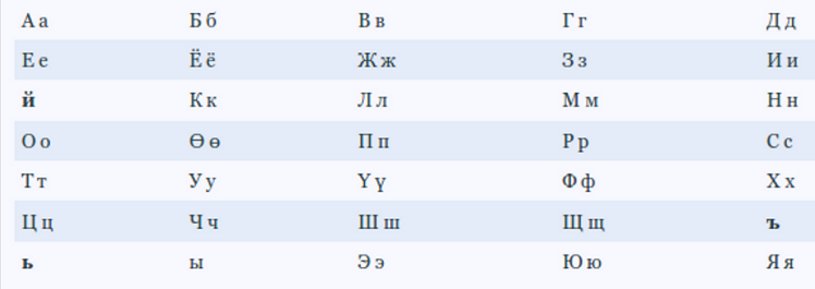The Mongolian language is hard to learn. Yes, its grammar is different from English grammar, but that’s not really what makes it hard. Yes, it is written in Cyrillic, but that is not even a minor challenge. Yes, it is spoken by very few people in the world, but when you’re in Mongolia or among Mongolians, it is never difficult to find people willing to speak with you in their native language.
No, what makes Mongolian hard is the lack of accessibility to good learning materials. When you learn Mongolian, you are often on your own with very little to work with. This has been a personal frustration for me since I came to Mongolia for the first time in 2002 as a Peace Corps Volunteer. I had just come from living in Japan for two and half years, and I naively expected to find the same abundance and diversity of language resources I found in Japan here in Mongolia. I learned to speak Japanese by using numerous study guides and textbooks, reading books aimed at primary and secondary school students, and watching episode after episode of Crayon Shin-chan, but in the soum I lived in Arkhangai the best I could find were World Bank and IMF reports on Mongolia’s current fiscal situation. Wow, I almost fell asleep just writing the second half of that sentence.
Things have gotten better over the last decade. Admon Publishing and other print houses are churning out thousands and thousands of books per year, and going to the bookstore is actually quite rewarding now in comparison to just a few years ago. But, access to good materials is still largely dependent on being in Ulaanbaatar, and even though it is nice you can read “Hunger Games” in Mongolian now (very fun read, by the way), it isn’t much help if you are still struggling to understand how to say “How much does this cost?”
On this website is a language section that is my contribution to making learning Mongolian more accessible. From the fall of 2009 until last spring I worked with Curt Madison and D. Narantsetseg on an experimental online Mongolian language course, first at the University of Alaska Fairbanks and then at the University of Maine in Augusta. The idea was pretty simple. We’d create Mongolian language resources using any and all forms of networked, digital media technology to ensure broad accessibility. The courses were brought about by an informal agreement between the American Center for Mongolian Studies, which I was the US Director of at the time, and the two universities to put the idea into practice with real live students. Over the two years we were able to put together a fairly good introductory course, but offering it through universities as a credit course ran counter to the goal of ensuring broad accessibility because learners had to pay tuition in order to access the materials. My own philosophy, the Open Courseware philosophy, is that learners should pay tuition for access to the instructors and instruction, but textbooks and other materials should be available for independent study for free or a much reduced cost.
The language section of this site is intended to achieve that goal. I am currently working to retool some of the materials from the experimental courses and creating new resources to work as a general set of tutorials for learning Mongolian independently. The design is pretty basic on the surface. The course modules are structured the way I personally learn languages. If you go to any computer programming tutorial site, you’ll see parallels in the approach, because I spend a lot of time using those sites to improve my knowledge of computer languages like Python and PHP. Basically, you introduce syntax (i.e. grammar) and vocabulary, provide extensive examples of usage in specific contexts, and give exercises to put the knowledge gained to the test. There are probably hundreds of language methodologists out there who would critique that approach as arcane, backwards, and, gasp, boring, but I have yet to see anyone learn a foreign language through anything but hard work that is sometimes, gasp, boring. Pretending that it isn’t hard work does learners a disservice, and it allows instructors to be sloppy about presentation. The approach on this website is to boil the language down to its essentials and to structure the presentation so a learner can take a systematic approach to learning the language block by block. If done right, a learner should not be bored because what he/she is learning is relevant and helpful to actually understanding the language. Grammar rules are helpful heuristic devices, and it is easier to learn one rule that applies to dozens of circumstances than to independently learn dozens of phrases that utilize the same grammar rule. But, that is the computer nerd in me talking, and I concede my approach might not be for everyone. But, the good news is that it costs nothing to figure out whether the approach is right for you.
Underneath the surface, the design is a bit more complicated. My aim is to make everything produced reusable not only by me but other people out there wanting to learn or teach Mongolian. Much of the content is created dynamically using a “resource database” and simple Application Programming Interface (API). Instead of creating multiple copies of these resources as new tutorials or courses are constructed, each tutorial or course “borrows” the resource from the database when it is needed. As such, if a resource is improved upon or updated, those changes automatically propagate to all web-pages that display that resource. It may not be immediately obvious, but this allows for incremental improvement in the materials over time without having to go back and manually update each web-page where those materials appear. It makes the courses almost like living entities that can grow and change as time passes.
The language section is a work in progress, and I have set up a syndication feed for the beginner level course for those who want to follow its development. My ambitious goal is to get one lesson per week up over the coming months, but that goal has proven difficult to achieve so far. It’s been more like one lesson every three weeks. If you have comments or suggestions about improving the materials, let me know by commenting below or on the Mongolist Facebook page. Learning Mongolian is hard work, but I think it is also extremely rewarding. I hope these resources help you with your language learning goals.



